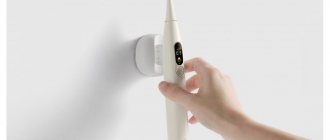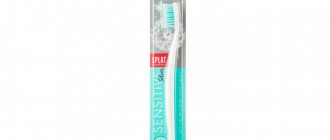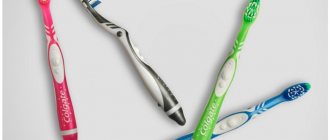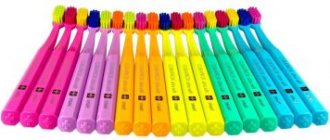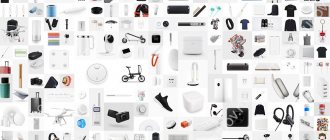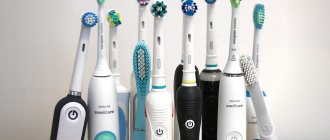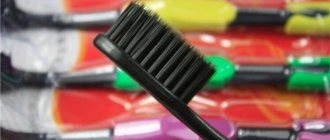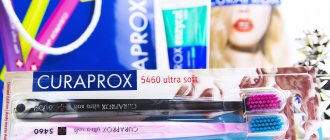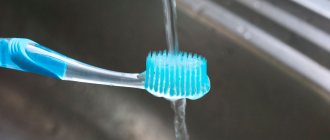From this article you will learn:
- When should you start brushing your baby's teeth under one year old?
- how to brush children's teeth at one year, 2 years and later,
- how to choose toothpaste for a child.
Baby teeth are very important for a child, because... they ensure jaw growth and also participate in the formation of correct pronunciation (diction). However, many parents make a number of mistakes that lead to early damage to baby teeth by caries, the subsequent development of pulpitis and periodontitis, and ultimately removal. At the same time, early removal of baby teeth causes disruption of jaw growth and delay in the eruption of permanent teeth.
Early caries of primary teeth is a consequence of - 1) insufficient oral hygiene in a child, which leads to the accumulation of soft plaque and an increase in the number of cariogenic bacteria, 2) improper diet, irregular feeding on demand or night feeding, 3) consumption of large quantities easily -digestible carbohydrates. There is even a term in dentistry - bottle caries, which shows the important connection between a child’s poor nutrition and the development of dental caries.
Caries of primary teeth in children -
Therefore, it is very important for parents to know when to start brushing their baby’s teeth, what toothpaste is best to use, and, in the future, how to teach their child to brush his teeth on his own when he reaches the appropriate age. Remember that soft flour and starchy foods (i.e., everything that contains easily digestible carbohydrates), sour and sweet juices, as well as soda - in conditions of insufficient hygiene quickly lead to the development of caries.
At what age should a child brush his teeth?
When to start brushing your child’s teeth: You need to start hygienic oral care for your baby even before the first teeth appear, i.e. this must be done from birth. The frequency of hygiene is at least 2 times a day (after breakfast and after the last feeding of the day). The sequence of actions will be as follows...
To clean your baby's gums - 1) place your baby on your lap (with his head close to your chest), 2) gently but firmly wipe with a clean, damp gauze pad on both sides of the upper and lower gums (for convenience, you can wrap a piece of the bandage around your finger ). In addition, there are special fabric finger pads for these purposes.
A gauze swab can be moistened with plain water, but it is better to use special “foams” for this, which are designed to care for both gums and teeth for children from 0 years old. For example, foam for teeth and gums of the “SPLAT Junior – calcium and lactic enzymes” series is especially suitable for children from 0 to 4 years old (Fig. 2). The cost is about 180 rubles per 50 ml tube.
Positive properties of foams for cleaning gums - for example, SPLAT Junior foams contain a complex of milk enzymes, which include lactoperoxidase, lactoferrin, glucose oxidase and lysozyme. These enzymes increase the immunity of the mucous membrane and protect it, including from bacterial and viral infections, which in particular will be reflected in a decrease in the incidence of stomatitis (both herpetic and aphthous).
In addition, the foam also contains licorice extract, glycyrrhizinate, creatine and arginine, which have an anti-inflammatory effect, thereby reducing the negative symptoms of teething. But hygiene products for children in the form of foams are produced not only by SPLAT, but also by 2-3 other manufacturers.
Advantages and disadvantages
How to brush your child's teeth at one year of age
This product has the following advantages:
- hygienic care of the item is quite easy;
- it contains absolutely no harmful substances;
- provides a massage effect;
- Since it is made of soft material, it is almost impossible to injure the child’s gums.
In addition to its advantages, the brush also has disadvantages:
- short service life. Very often, when little children start teething, they start to itch, so the baby can simply chew on the device;
- The size of the silicone brush is more designed for women’s fingers, but it may not fit on men’s;
- It often happens that a child bites the brush, naturally, with his finger inside it, so parents need to be careful.
How to properly brush children's teeth -
As a rule, the eruption of baby teeth begins between 6-10 months and continues until 24-31 months. It must be said that in some children this happens alarmingly and painfully, but in others it can occur with virtually no discomfort and irritability. At the link above, you can find a convenient diagram with the timing of the appearance of teeth in your baby.
How to brush a child’s first teeth: at first, emerging teeth can be cleaned in the same way as toothless gums - using a gauze swab and dental foam. There are also special silicone fingertips with silicone bristles (Fig. 3-4). Some toothpastes for children from 0 to 3 years old may already include a special silicone brush attachment in the form of a fingertip. We don’t want this to look like an advertisement, but we know of only one such option - these are the pastes from the “SPLAT Baby” series.
As your child gets used to this procedure, you can start using a toothbrush. There is no clear time frame for switching from using a gauze swab or silicone fingertip to a toothbrush. Some pediatric dentists recommend waiting until 4 teeth appear in a row, others recommend waiting until 2 years of age.
Toothbrush for babies (in the form of a silicone fingertip) –
How to properly brush your child's teeth -
How to brush the teeth of a one-year-old child: at this age you need to brush your teeth 2 times a day (in the morning - after breakfast, and before bed). Brushing your teeth at this age should last at least 1 minute. The accumulation of microbial plaque in children is especially pronounced in the area of the necks of the teeth, but special attention should also be paid to large chewing teeth (molars). The chewing surface of these teeth has deep grooves (fissures), in which caries can very quickly appear in young children.
When the child turns 3 years old, it is advisable to increase the duration of brushing teeth to 1.5 minutes. Children over 6 years old need to brush their teeth for 2 minutes. Cleaning time is of great importance because... it is necessary not only to scrape off soft microbial plaque from the teeth (24stoma.ru). Time also affects how many useful elements from toothpaste (this can be calcium or fluoride) will have time to penetrate the low-mineralized enamel of children's teeth. Therefore, if the brushing time is too short, this will increase the risk of dental caries in the child.
Subtleties of choosing a silicone fingertip
The silicone fingertip is the very first toothbrush in a child’s life. It is clear that a one-year-old baby will not yet be able to independently engage in oral hygiene, so parents should do this for him. The accessory is put on mom or dad’s finger, after which the parent brushes the child’s teeth.
When choosing such an accessory, it is worth considering the following features:
- The product must be made entirely of silicone - even the bristles. Only in this case will it preserve the health and integrity of the soft tissues, and the parent will be able to properly control the degree of pressure;
- The fingertip should not have any noticeable seams. Bacteria and other harmful microorganisms can accumulate in such irregularities;
- It is advisable that the kit include a special case for storing the finger brush.
Before and after use, the finger brush and hands must be thoroughly washed with soap and water. No toothpaste required. Cleaning should be done slowly, using massaging rather than traditional sharp movements.
How to teach a child to brush their teeth -
Teaching a child to brush his teeth is usually not easy, and so that he is not afraid of this procedure, you can present it in the form of a game.
Those. Play teeth brushing with your child, for example, let him “brush” your teeth with your brush, and you (in turn) brush your child’s teeth. At about 3-4 years old, you need to start teaching your child to brush their teeth on their own. However, most children lack coordination, so you will have to help your child brush their teeth until about 6 years old, and then actively supervise this process until at least 12 years old. Moreover, from about 3 years of age you can already start using an electric toothbrush. This will not only make the process of brushing teeth interesting for the child, but will also improve the quality of hygiene.
Keep in mind that a toothbrush and toothpaste alone are not enough for good oral hygiene. As soon as a child develops narrow dental spaces (where the brush bristles cannot fit through), it is necessary to try to clean them with dental floss at least once a day. You can more or less teach a child to use dental floss on their own no earlier than 10-12 years old, and therefore until this age you will have to help your child with this procedure.
What is a children's electric brush?
Kids are very attracted to colorful brushes, which also buzz, which allows them to turn the cleaning process into an exciting game. But in order to make the right choice, it is worth studying in more detail the features of such products.
What types of electric brushes are there?
There are several types of such products for babies:
- Classic option.
- Sound.
- Ultrasonic.
By cleaning method
The classic one has no additional functions; the rotating head removes plaque and dirt particles. The sound models contain not only rotation, but also vibrations, which makes it possible to most effectively eliminate microbes from the surface of tooth enamel.
Oscillation waves of ultrasonic models destroy the film created by bacteria and cope with the task most effectively.
By power source
This can be a built-in battery or a removable battery. Brushes are also available that charge from an electrical outlet or from a base (like mobile phones).
Availability of several modes
Additional functions include:
- tongue cleaning mode;
- gum massage;
- sleep timer;
- built-in melodies;
- cleaning mode for the inner surface of the cheeks.
When can a child use an electric toothbrush?
Dentists do not recommend using the electric option for children under 3 years of age. Older children should choose a classic version without many additional functions as a first acquaintance with such an accessory.
Children's toothbrushes: how to choose
How to choose a toothbrush for a child: keep in mind that toothbrushes for children are produced a priori only with soft bristles (and this applies to both regular manual toothbrushes and attachments for electric toothbrushes). A children's toothbrush has a smaller head with bristles than an adult toothbrush. Moreover, many manufacturers make the heads of the brushes rubberized to eliminate the possibility of injury to the delicate mucous membrane of the child.
When purchasing, pay attention to the packaging - all toothbrushes for children are marked with information about the recommended age of the child for such a brush. It is also worth choosing brushes that have an attractive design (in this case, the brush will be interesting to the baby, and he will be less afraid of it). Below you can see several examples of good toothbrushes designed for children of different ages (age markings are on the packaging of the brushes).
Important: change your brush every 3 months, but possibly earlier (if the bristles of the toothbrush “fluff” before this time), because Worn bristles are very poor at removing microbial plaque. If you have 2 children, then each of them should have their own toothbrush. Under no circumstances should you brush your child’s teeth with someone else’s toothbrush (including your own), because... in this case, you will infect the child’s oral cavity with your microflora.
Remember that a child is born with a sterile oral cavity, and all cariogenic bacteria are inherited from his parents and relatives. For example, when you lick your baby's spoon to taste his porridge. When you or relatives kiss a child on the lips, etc. Well, as a result, we get dental caries in early childhood.
Electric children's toothbrushes - from about 3 years of age, you can add variety to your child's oral hygiene with the help of an electric toothbrush. Such a brush will be interesting to the child and will make the routine process of brushing teeth much more interesting. Moreover, so that the child is not afraid, you can do everything again in the form of a game, when you brush the child’s teeth, and the child brushes your teeth. But keep in mind that you need to do this with different attachments (otherwise you will infect the child with your cariogenic microflora)!
When buying an electric toothbrush, pay attention to the age markings on it. The fact is that there are different models of children's electric brushes, and they can be recommended for children of different age categories. Examples of Oral-b electric toothbrushes:
How to choose for children from 1 year to 3?
Need to know! The main requirements for a cleaning device for babies aged one to three years are:
- soft synthetic bristles that gently clean teeth from plaque;
- flat cleaning head shape;
- small size of the working part of the brush (no more than 2 cm);
- wide rubberized handle that will not slip out of wet hands;
- working head height not exceeding 1.1 cm;
- arrangement of villi in 3-4 rows;
- safety circle.
You should refuse to purchase a product if the package says o - this device will not suit a baby, because each age period requires a specific model.
Remember! Most manufacturers take a responsible approach to completing the task. They produce devices that are suitable for children's teeth and are appropriate for the baby's age.
To ensure high-quality hygiene, parents should brush the teeth of small children , because due to their age, the baby will not be able to properly clean the enamel from plaque.
In the future, insufficient oral care can lead to caries and gum inflammation.
Therefore, in order to avoid the occurrence of dental diseases, experts advise gradually accustoming your child to brushing his teeth, showing him how to carry out the procedure correctly.
Cleansing the oral cavity in children is carried out in several stages:
- The cleaning head is placed in the oral cavity and positioned at an angle of 45 degrees.
- Cleaning the front teeth from the outside and inside is carried out with smooth circular movements (at least 20 movements for each tooth).
- To clean chewing teeth, the working part of the device moves to a horizontal position. The surface of the teeth is cleaned using sweeping movements.
- The reverse side of the working head, equipped with a grooved insert, is used to clean the tongue.
Important! By the age of three, a child will learn to brush his teeth without the help of adults, but this does not mean that he does not need to be monitored during the procedure.
How to choose the right toothpaste for your child -
To be honest, I have almost no idea how ordinary parents can navigate the abundance of conflicting information about the dangers and benefits of various children’s toothpastes, because up to 99% of all reviews about toothpastes on the Internet are hidden advertising or anti-advertising. In addition, the Internet has long turned into a garbage dump - after all, half of the sites contain absolutely irrelevant information that has not been updated for decades. Here are some examples.
Women's forums and blogs are filled with shocking articles about the dangers of parabens (preservatives) and sodium lauryl sulfate (SLS), about which various horror stories have been written. For example, that parabens are carcinogenic and accumulate in tissues, destroying the lungs and brain, and also that they can disrupt the endocrine system, exhibiting estrogenic activity. Regarding carcinogenicity and organ toxicity, this is generally not true (clinical studies), but as for estrogenic activity, this is a very interesting topic.
The fact is that parabens are a whole group of substances, which includes methylparaben, ethylparaben, propylparaben, isopropylparaben, butylparaben, isobutylparaben, and benzylparaben. So, toothpastes usually use only parabens with small chain sizes (these are methylparaben and ethylparaben). According to authoritative research, short-chain parabens do not have estrogenic activity at all, but long-chain parabens (for example, isobutylparaben) do.
But the most interesting thing is that the estrogenic activity of isobutylparaben is 240,000 times! less than estradiol (this is the most active female sex hormone of the estrogen group). Therefore, it may not have any clinical significance. But why it is really not advisable to include parabens in children’s toothpastes is due to possible irritation of the mucous membrane or the development of allergic reactions on the oral mucosa (according to statistics, this occurs in approximately 4% of children).
The same applies to the harm of sodium lauryl sulfate (SLS), the whole fault of which essentially lies only in accelerating the desquamation (desquamation) of the epithelium of the oral mucosa. Therefore, if a child uses toothpaste with SLS and has predisposing factors to the development of stomatitis or thrush, the frequency of repeated cases of stomatitis, as well as their severity, may be higher (compared to children who use toothpaste without SLS) . You can read about this in an authoritative study at the link (source), but if you don’t know English, use a browser translator.
Overall, I hope you will think about this information and begin to think more critically about information on forums and blogs. And we argue our point of view - not only with the dental education of the author of the article (with more than 20 years of experience), but also always provide links to the most authoritative clinical studies.
Now, more about choosing children's toothpaste -
On our website there is a separate article with a rating of children's toothpastes (for 2022). But in this section we would like to talk about the strategy for choosing toothpaste for children of different ages - from 0 to 2 years, from 2 to 6 years, and from 6 to 12 years. The fact is that there is a lot of outdated information on the Internet, and we want to tell you about the latest recommendations from the most reputable medical organizations. Those. everything we discuss below is recommended by the following organizations:
- "WHO" (World Health Organization),
- "EAPD" (European Academy of Pediatric Dentistry),
- "AAPD" (American Academy of Pediatric Dentistry),
- "AAP" (American Academy of Pediatrics),
- "StAR" (Russian Dental Association), etc.
The main question for parents - with fluoride or without fluoride
Fluoride-containing toothpastes have high anti-caries activity (unlike calcium-containing toothpastes without fluoride), however, excess fluoride intake into the body increases the risk of developing dental fluorosis. Fluoride cannot penetrate the oral mucosa, and its entry into the body during brushing is associated exclusively with involuntary swallowing of toothpaste. The latter is possible in children under 4-6 years of age, because At this age, children have not yet developed a fully controlled swallowing reflex.
But in order for a child to develop dental fluorosis, he needs to swallow almost half a tube of toothpaste every day . But this is impossible, because The recommended amount of toothpaste is much less. And therefore, swallowing fluoride toothpaste can be dangerous - only if you live in a region with a high level of fluoride in drinking water, or if you feed your child nutritional formulas enriched with large amounts of fluoride. If these 2 main factors are absent, then swallowing a small amount of fluoride toothpaste every day will never lead to the development of fluorosis.
→ Regions with high levels of fluoride in drinking water
In short, these regions include some areas of the Moscow region, Kirov, Vladimir, Samara, Ryazan, Tver, Irkutsk, Yaroslavl, Kaluga, Kemerovo regions, as well as Karelia and the Republic of Mordovia (source - see the link above). The ideal fluoride content in tap water is 0.7 mg/l, and exceeding this figure to 1.0-1.2 mg/l already statistically significantly increases the risk of developing fluorosis.
It is also important to consider that water filtration systems operating on the principle of reverse osmosis reduce the fluoride content in water by approximately 84%, and carbon filters by at least 81% (this was proven by research by Brown MD and Aaron G., publication in the journal " Pediatr.Dent" for 1991). Therefore, even if you live in regions with a high level of fluoride in water, your child’s fluoride intake may be within normal limits (the main thing is that you do not forget to regularly change the cartridges for your filter, and also do not give it bottled or spring water).
Table 1 is the recommended total daily fluoride intake for children 0 to 19 years of age. Link to scientific publication (Source - US National Academy of Sciences).
What else is very important. The risk of developing fluorosis only exists in children between 0 and 6 years of age, with the most important period being between 0 and 2 years of age. Excess fluoride consumption after 6 years can no longer lead to the development of fluorosis in permanent teeth. Therefore, regarding the prescription of fluoride toothpaste to a child from 0 to 2 years old, it is better to consult your dentist to be on the safe side.
If your child does not have carious teeth (or there are only isolated cases of caries), in this case you can safely use calcium-containing toothpastes without fluoride , but it is imperative that it contains a high dosage of xylitol/xylitol. Xylitol is a sweetener that also has anti-caries activity, although it is less than fluoride. It is best when fluoride-free paste contains a combination of several calcium compounds at once - this can be calcium lactate, calcium pathotenate, calcium glycerophosphate and hydroxyapatite.
If your child has new carious lesions regularly, then, provided there is no excess consumption of fluoride in drinking water and milk formulas, fluoride toothpaste can be prescribed even from 0 to 2 years. Previously, the concentration of fluoride in toothpastes for children of this age was only 500 ppm, but since 2022, WHO (World Health Organization), as well as all other organizations listed above, have changed the recommendations to 1000 ppm. The main thing is not to exceed the recommended amount of toothpaste.
Table 2 – recommended concentration of fluoride in toothpaste for children. This is data from a very authoritative organization - the European Academy of Pediatric Dentistry (EAPD). Link to scientific publication (source).
Therefore, it is considered safe for children 0 to 2 years of age to use toothpaste with 1000 ppm fluoride—about the size of a small pea (or a large grain of rice). For children from 2 to 6 years old, the volume of toothpaste with 1000 ppm fluoride should be about the size of a large pea. An important point - if your children's toothpaste contains only 500 ppm of fluoride, then to achieve exactly the same content of fluoride ions - you just need to use 2 times the volume of toothpaste than stated above.
Volume of toothpaste with fluoride 1000 ppm (up to 2 years, and after 2 years) –
Toothpastes if your child has frequent stomatitis -
In early childhood, children experience fairly frequent outbreaks of various forms of stomatitis on the oral mucosa. You can, of course, regularly treat aphthous and herpetic forms of stomatitis. But it is much more effective to use special toothpastes to prevent stomatitis, which increase the protective properties (local immunity) of the oral mucosa - due to the content of lactoperoxidase, lactoferrin, glucose oxidase and lysozyme. These enzymes are part of “SPLAT Junior” and “SPLAT Baby” (Fig. 12-13).
Can a child use mouthwash?
As a general rule, mouthwashes are not recommended for children under 6 years of age. It is at this age that children develop the skill of not swallowing liquids when necessary and spitting them out. It is important to note that mouthwashes are not a substitute for traditional teeth brushing. They in no way help to clean your teeth, but they help strengthen your teeth enamel due to their fluoride content.
Consequences of poor oral hygiene in children -
Many parents either take their children's oral hygiene very lightly or consider the current level of hygiene to be good. But in the vast majority of cases this is self-deception. Insufficient hygiene primarily causes the accumulation of soft microbial plaque and tartar, which in turn leads to –
- to the appearance of gingivitis in a child,
- to tooth destruction by caries,
- to the development of pulpitis and acute pain,
- further - to the appearance of fistulas and purulent bumps on the gums in the child, which will require the mandatory removal of the causative milk teeth. We hope that our article: At what age should a child brush his teeth was useful to you!
Sources:
1. The author’s higher professional education in dentistry, 2. Based on 20 years of personal experience as a dentist, 3. The European Academy of Paediatric Dentistry (EU), 4. National Library of Medicine (USA), 5. “Pediatric therapeutic dentistry. National leadership" (Leontyev V.K.).
Types of brushes for children
Not so long ago, only classic versions of brushes were presented in stores, but the development of technology also affected the hygiene sector, and electric and ultrasonic models appeared on the shelves.
Classic simple
The simplest and cheapest option. Suitable for the youngest children. They are hygienic, special and preventive. The number of cleaning tufts is from 25 to 40. For the little ones, choose models with soft bristles, for older children with a medium degree of hardness.
Electric
Such models are equipped with additional functions and are more expensive than ordinary ones. However, there are options with replaceable attachments, which allows you to save on buying a new accessory; just buy a removable attachment, and the brush is like new again.
Dentists do not recommend using electric models more than 2 times a week, as they wear away the enamel.
Ultrasonic
The most modern version of a hygiene product, which has not yet become widespread. Recommended for older children.
Due to the influence of vibrations of sound waves, dental plaque is destroyed.

